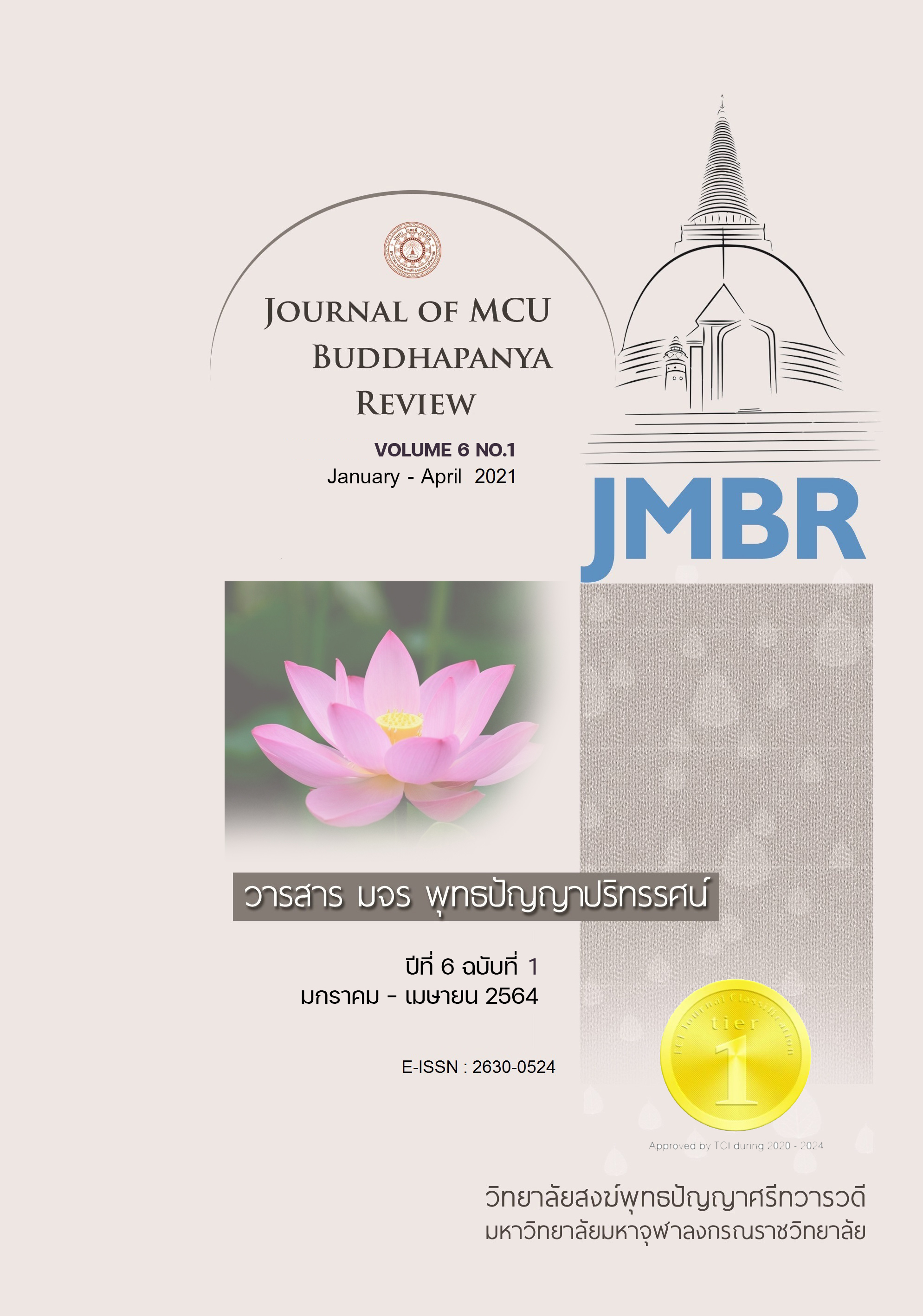แนวทางการประยุกต์ศาสตร์การเล่าเรื่อง สู่การสอนวรรณคดีไทยในระดับมัธยมศึกษา
คำสำคัญ:
การเล่าเรื่อง, การสรุปเนื้อหา, เทคนิคการสอนวรรณคดีไทยบทคัดย่อ
บทความนี้มีวัตถุประสงค์เพื่อเสนอแนวทางและตัวอย่างการประยุกต์ “ศาสตร์การเล่าเรื่อง” ที่นำไปสู่เทคนิคการสอนวรรณคดีร่วมกับการพัฒนาทักษะทางภาษา เพื่อให้ตอบสนองตัวชี้วัดที่สัมพันธ์กับการรับสารเพื่อสรุปความหรือสรุปเนื้อหาจากวรรณคดีตามที่กำหนดไว้ในหลักสูตรแกนกลางการศึกษาขั้นพื้นฐานฯ ระดับมัธยมศึกษาตอนต้น
ผู้เขียนนำเสนอตัวอย่างการจัดกิจกรรมการเรียนรู้โดยใช้เทคนิคเพื่อให้ผู้เรียนสามารถเข้าใจเนื้อหาวรรณคดีและเข้าถึงรสผ่านการเล่าเรื่องที่กระตุ้นความคิดและจินตนาการไปในทางสร้างสรรค์ โดยเสนอแนวทางการเล่าเรื่องวรรณคดีไทยออกเป็น 2 ประการ ได้แก่ 1. การเล่าเรื่องในฐานะ “ผู้สอน” ประกอบด้วย การเล่าโดยใช้คำถามกระตุ้นความคิดและจินตนาการ การเล่าโดยการเปรียบเทียบอุปมา และการเล่าโดยใช้สื่อภาพประกอบการเรียนการสอน และ 2. การเล่าเรื่องในฐานะ “ผู้เรียน” ประกอบด้วย กิจกรรมเล่าเรื่องต่อเนื่องกันคนละประโยค กิจกรรมนักเล่านิทานผ่านผังกราฟิก และกิจกรรมตัวต่อเรื่องราวเล่าวรรณคดี กิจกรรมการเล่าวรรณคดีไทยในชั้นเรียนที่มีประสิทธิภาพ นอกจากจะบรรลุตัวชี้วัดแล้วยังช่วยให้ผู้เรียนเกิดความรู้สึกประทับใจต่อเรื่องราววรรณคดีไทยและพัฒนาจิตพิสัยเชิงบวกต่อวรรณคดีในฐานะมรดกทางวัฒนธรรมของชาติไทย
คำสำคัญ: การเล่าเรื่อง/การสรุปเนื้อหา/เทคนิคการสอนวรรณคดีไทย
Abstract
The purpose of this article was to propose the ways and the examples of storytelling application which leads to teaching literatures techniques and developing language skills to respond the indicators which relates with receiving the messages for summarising or concluding the substances from the literatures which are specified in Basic Education Core Curriculum Secondary Education.
Researcher proposed the examples of teaching management by using techniques to let the students understand and deep in the substances of literatures through storytelling which can stimulate thought and imagination in the creative way by using 2 ways of storytelling in Thai literatures which are; 1) telling in the status of “teacher” comprised; telling by using stimulating thought and imagination questions, telling by using analogy, and telling by using instruction picture media 2) telling in the status of “student” comprised; sentence continuing telling activity, storytelling through graphic organization activity, and literature story puzzle activity. Although these potential literature storytelling class activities can achieve the indicators, they also made students impress with Thai literature and improved good affective domain of literatures in the status of Thai cultural heritage.
Keywords: Storytelling / Summarising / Teaching Thai literatures techniques
เอกสารอ้างอิง
Porntip Kaengkhan and Chalearmlahp Thong-Aj. (2553). Module 5 Thai Language Learning Management for Developing Thinking Process In Thai LanguageTraining manualIin Junior High School, 229-237. Bangkok: Facalty of Education of Chulalongkorn University.
พัชรา วาณิชวศิน. (2562). “เทคนิคการเล่าเรื่อง: เครื่องมือสอนที่มีศักยภาพ.” ใน วารสารครุศาสตร์ อุตสาหกรรม ปีที่ 18 ฉบับที่ 3 (กันยายน-ธันวาคม), 281-291.
Patchara Vanichvasin. (2562). “Storytelling Techniq\ue as a high potential teaching tools.” JOURNAL OF INDUSTRIAL EDUCATION, 18, 3 (September-December), 281-291.
ชนาธิป พรกุล. (2557). การสอนกระบวนการคิด: ทฤษฎีและการนำไปใช้. กรุงเทพฯ: สำนักพิมพ์แห่งจุฬาลงกรณ์มหาวิทยาลัย.
Chanathip Pornkul. (2557). Teaching the Thinking Process: Theory and Adoption. (3rd ed.). Bangkok: Chulalongkorn University press.
วลัย อิศรางกูร ณ อยุธยา. (2555). ครูสังคมศึกษากับการพัฒนาทักษะแก่นักเรียน. กรุงเทพฯ: สำนักพิมพ์ แห่งจุฬาลงกรณ์มหาวิทยาลัย.
Walai Isarangkura Na Ayudhaya. (2555). Social Science Teacher and Student’s Skill Development. Bangkok: Chulalongkorn University press.
ยุพร แสงทักษิณ. (2559). แม่เลี้ยงเดี่ยวในวรรณคดีไทย. กรุงเทพฯ: สำนักงานคณะกรรมการการศึกษาขั้นพื้นฐาน.
Yuporn Sangtaksin. (2559). Single Mother in Thai Literature. Bangkok: Office of the Basic Education Commission.
กระทรวงศึกษาธิการ. (2551). หลักสูตรแกนกลางการศึกษาขั้นพื้นฐาน พุทธศักราช 2551. กรุงเทพมหานคร: ชุมนุมสหกรณ์การเกษตรแห่งประเทศไทย.
Ministry of Education. (2551). Basic Education Core Curriculum B.E. 2551. Bangkok: The Agricultural Co-operative Federation of Thailand press.
อัจฉรา ชีวพันธ์. (2557). ภาษาพาสอน: เรื่องน่ารู้สำหรับครูภาษาไทย. (พิมพ์ครั้งที่ 8). กรุงเทพฯ: สำนักพิมพ์แห่งจุฬาลงกรณ์มหาวิทยาลัย.
Artchara Cheevapan. (2557). PHASAPHASORN: for Useful tips for Thai teacher. (8th) Bangkok: Chulalongkorn University press.



